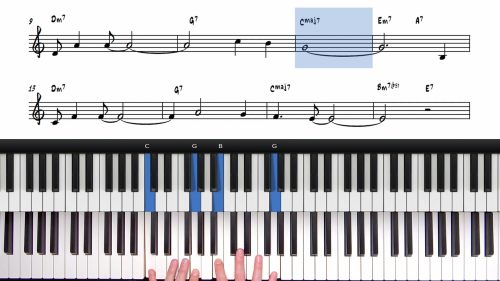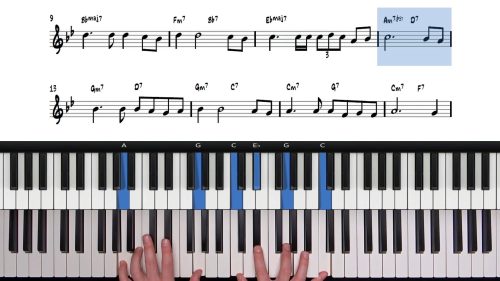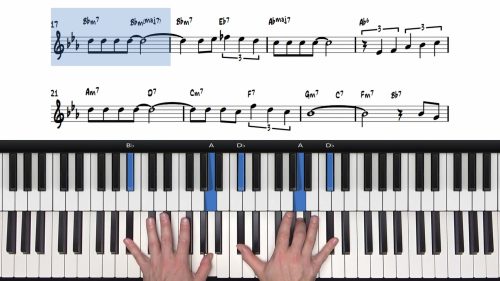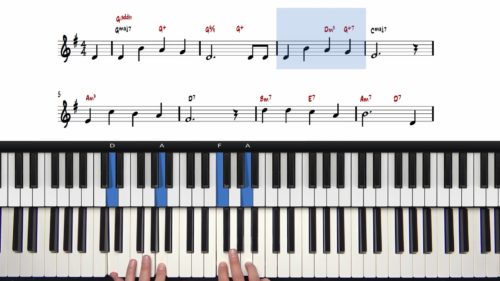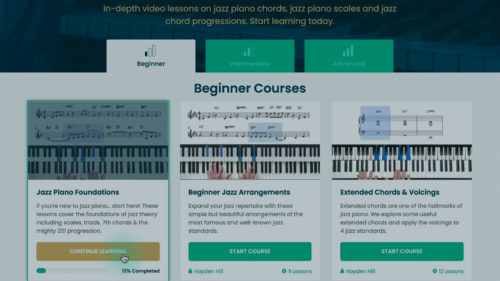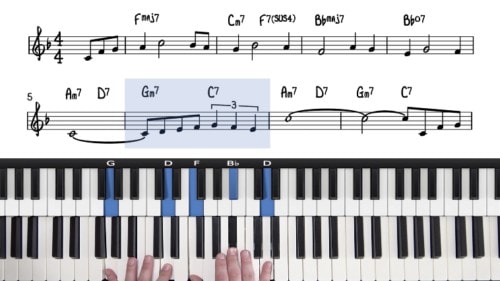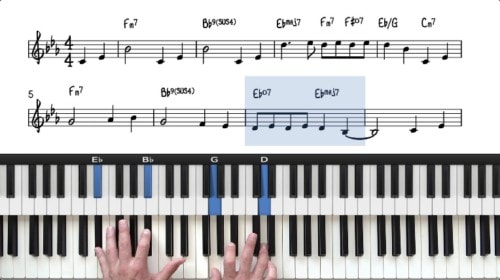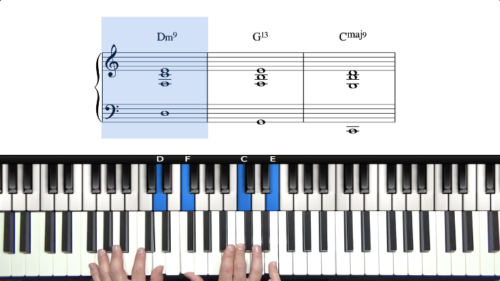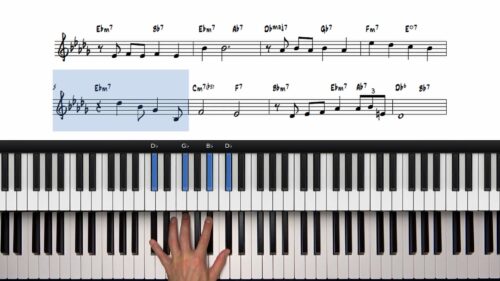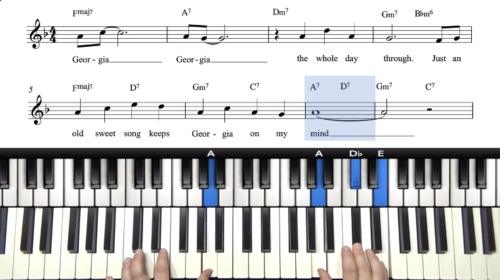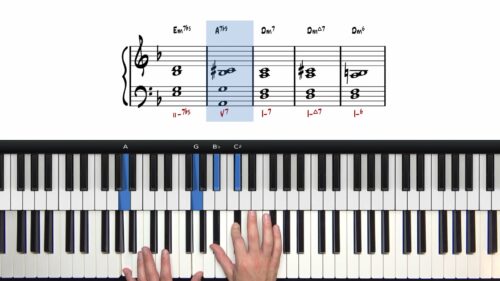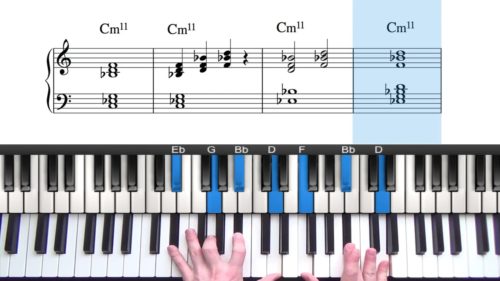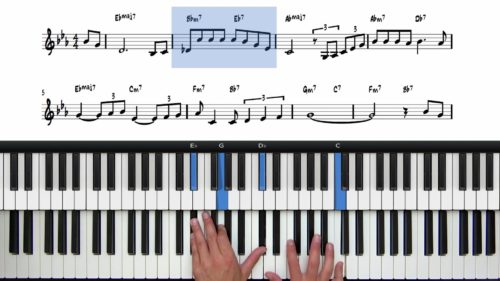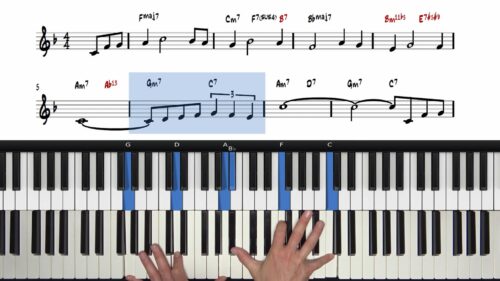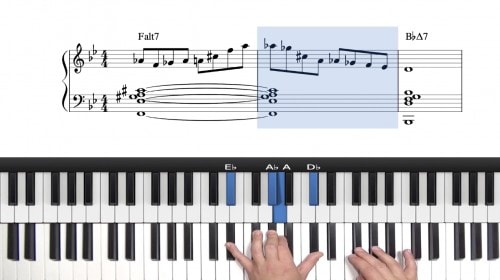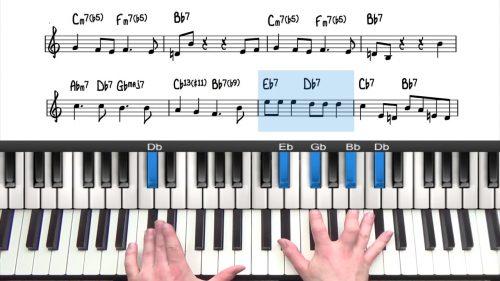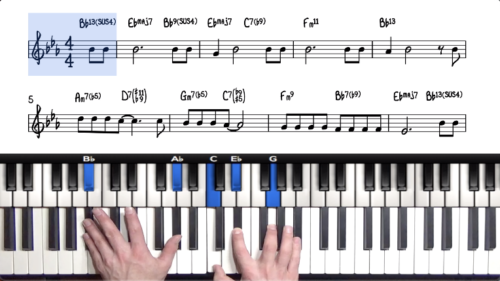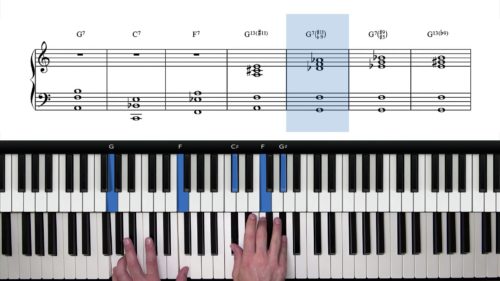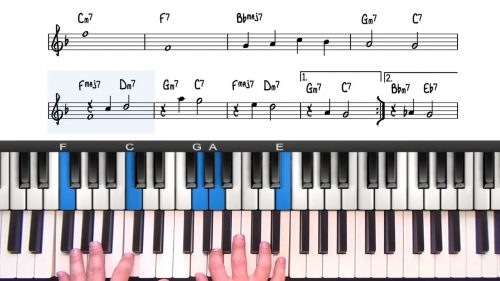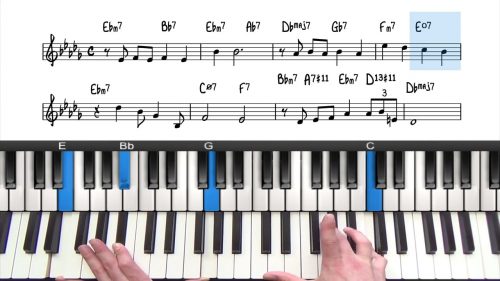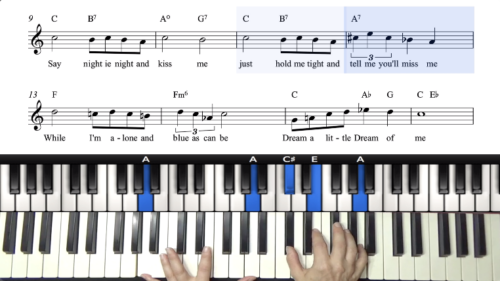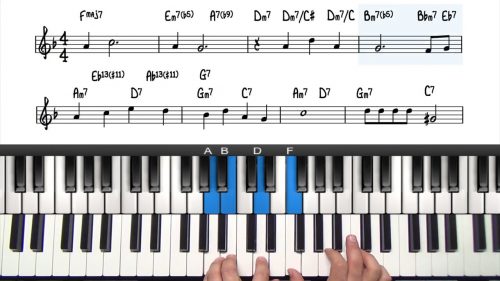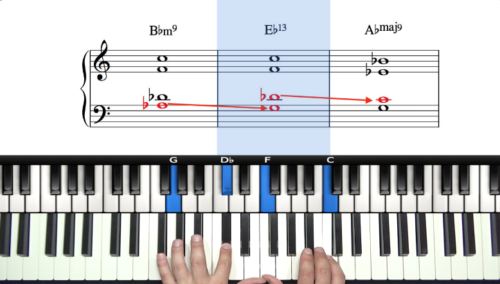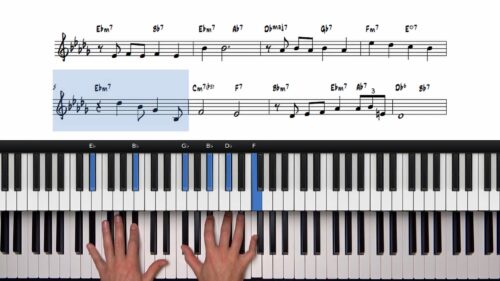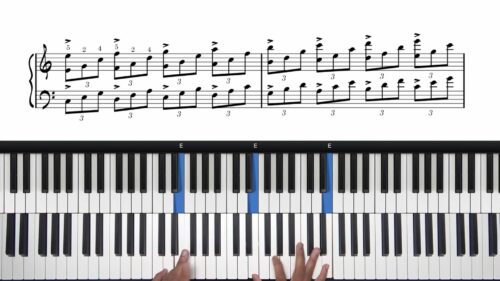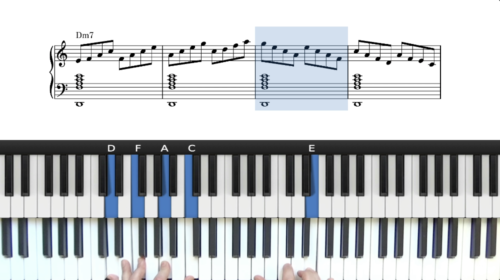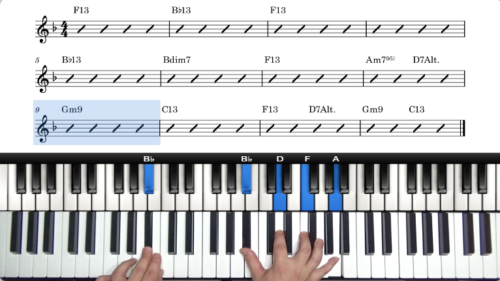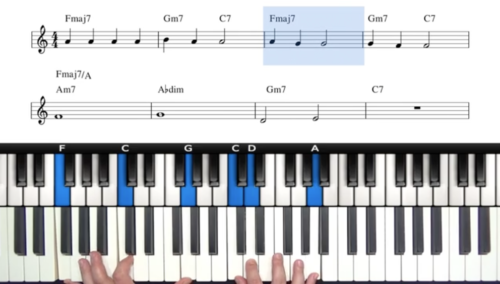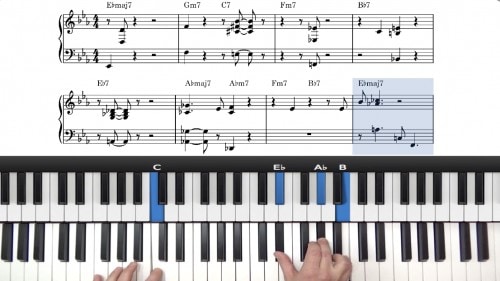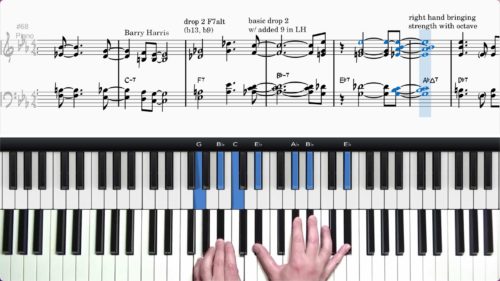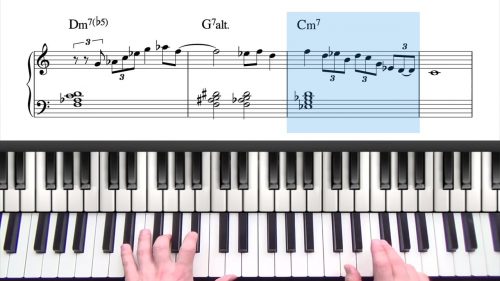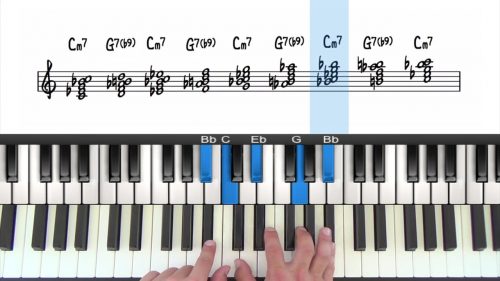This course will get you reading lead sheets as quickly as possible. We explore “Moon River” & “Fly Me To The Moon” which are perfect songs for jazz piano newbies.
Try a Free LessonBeginner Courses
If you’re new to jazz piano… start here! We cover the foundations including scales, intervals, triads, 7th chords, the 251 progression, and beginner jazz standards.
Try a Free LessonExpand your jazz repertoire with these simple but beautiful arrangements of the most famous and well-known jazz standards.
Try a Free LessonExtended chords are one of the hallmarks of jazz piano. We explore some useful extended chords and apply the voicings to 4 jazz standards.
Try a Free LessonPracticing whole step 251s allows us to clearly visualise and execute sophisticated voicings, fills, and ornamentation for 251 progressions all 12 keys.
Try a Free LessonAn in-depth study of rootless chord voicings; we create rootless 251 progressions in major and minor keys & apply to 3 well-know jazz standards.
Try a Free LessonA selection of well-known festive arrangements. Share these jazzy Christmas tunes with your friends and family over the holiday season.
Try a Free Lesson“How To Accompany Singers” is a vocal accompaniment course taught by Lyndol Descant – singer, jazz pianist, and composer based in Brooklyn, NYC.
Try a Free LessonLearn the nuances of minor harmony and improvisation using “In A Sentimental Mood”. We explore the 3 minor scales and their roles in improvisation.
Try a Free LessonIn this series of short and concise tutorials, Hayden shares his knowledge of jazz harmony and tricks and tips when arranging for solo jazz piano.
Try a Free LessonOnline Jazz Piano Lessons from PianoGroove.com
PianoGroove jazz piano lessons can be broadly split into 2 categories: theory lessons and jazz standard lessons. The theory lessons cover the fundamentals of jazz piano including basic scales and chords, common progressions such as major 251s and minor 251s and also chord extensions and alterations. The jazz standard lessons apply the theory in a practical context and show you how to build an arrangement from a lead sheet.
All PianoGroove tutorials are planned, recorded and edited based on 3 core principles:
ACCESSIBILITY
Our online jazz piano lessons start with a thorough explanation of the topic covered. We pay special attention to the pacing of the lesson and ensure that the material is covered slowly enough for you to fully digest the key points. All lessons begin with simple examples and the difficulty gradually increases throughout the lesson.
LESSON VISUALS
PianoGroove's unique 3-part layout provides the best visual quality on the web. The Synchronized Light-Up Midi Keyboard gives you instant clarity into dense voicings so you can always see which notes are being played. Our In-Video Notation allows you to gain deeper insight into the material covered and relate the theory to chord symbols, shapes and progressions.
CONTEXTUAL RELEVANCE
Perhaps the most valuable feature of PianoGroove. All jazz piano lessons are applied to common chord changes so that you understand how to use the theory in a practical context. The goal for many students is to pick up a fake book and just play from lead sheets. Whether you are playing solo piano, or with a band or jazz trio, this skill is invaluable.
Over 20 Free Jazz Piano Lessons!
JAZZ PIANO LESSONS FOR BEGINNERS
JAZZ PIANO CHORDS
JAZZ STANDARD LESSONS
PianoGroove Pro Member Lessons
PianoGroove Pro is an online jazz piano course that covers more detailed and advanced topics. These jazz piano tutorials are focused towards intermediate students who understand the basics and want to take their playing to the next level. The pro lessons on chords and voicings delve deeper into altered jazz harmony. Altered voicings are usually associated with the minor 251 progression but we can also apply altered jazz chords to any major 251 progression. Adding these alterations will spice up the sound of major 251s and create more interest in your playing.
An important area of study in altered harmony is upper structure triads. Sometimes abbreviated to upper structures, these two handed voicings are the most effective way to learn and memorise chord shapes for complex altered dominant sounds. Other lessons in this series cover advice and guidance for practicing upper structures and also a dedicated lesson on applying upper structures to jazz standards.
